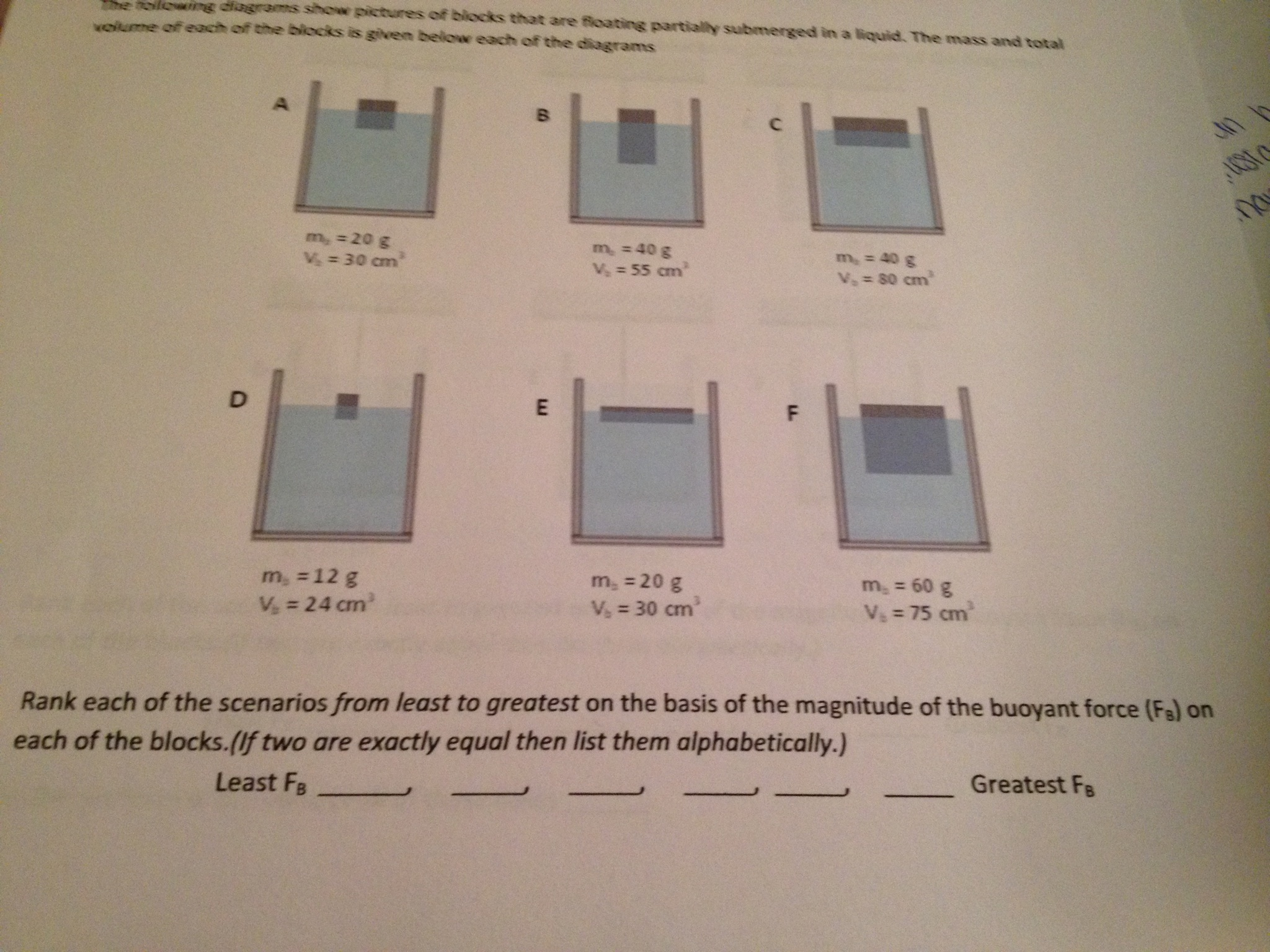| Answer to Question #4 | |
| Answers: 1) The ranking is (from smallest to largest), the ping-pong ball, the wood block, the brass weight. Recall Archimedes and what he taught you about buoyancy: An object in a fluid will experience an upwardly directed buoyant force equal to the weight of the displaced fluid. The largest buoyant force will thus be acting on the object that displaces the largest amount of fluid. Clearly, the brass weight is the largest object, and, since it is completely submerged, it is displacing the greatest volume of fluid. Thus, it is experiencing the greatest buoyant force. The ping-pong ball, which is small and only partly submerged, is displacing the least amount of water. Thus, it experiences the least buoyant force. The wood block is in the middle of the two. 2) All three objects displace some water. All three objects experience a buoyant force. There are (at least) two common misconceptions related to this question. One is that a buoyant force must be greater on a floating object than a submerged object. Not necessarily true. Don’t forget that there’s another force at play here – the force of gravity! The force of gravity on the brass weight is much larger than the buoyant force on the brass weight so that object sinks. On the other hand, the buoyant force on the ping-pong ball is equal to the force of gravity on the ping-pong ball, so that object floats. But the buoyant force on the brass weight is still very much larger than the buoyant force on the ping-pong ball. (Don’t mix up the size of the force with the effect of that force.) A second common misconception is that if the object is resting on the bottom, then there must be no buoyant force. Not so. The buoyant force is very much still present. So is the force of gravity. And a third force, the force between the bottom of the tank and the object is also present. These three forces combine to equal zero and the object rests in equilibrium. Eureka! | |
| Click here Q of W Index to see other questions. | |

Buoyant Force Is Greatest On A Submerged Area
Dec 24, 2020 The force of buoyancy that acts on an object is directly proportional to the volume of the object that is submerged. In other words, the more of a solid object that is submerged, the greater the force of buoyancy that acts on it. This means that even objects that sink in liquid have a buoyancy force pushing upwards on them. The force of gravity on the object acting downwards, i.e. Its weight, is balanced by a buoyant force or upthrust acting upwards. Since the two are the same, the object floats. In this second scenario, the object doesn't become fully submerged. If we push the ball below the surface, it will displace more water, increasing the buoyant force.
